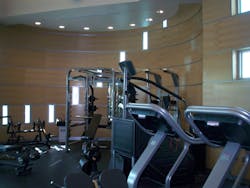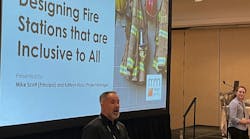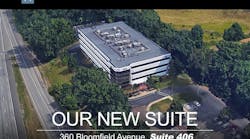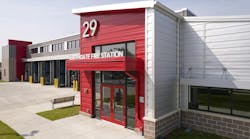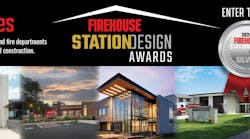There are lessons to be learned from building a fire station, whether it is your first or fiftieth. We reached out to a facility manager and three fire chiefs to share their experiences and the lessons they learned that ranged from finding the right contractors to design details to cost considerations.
In 2011, Hillsborough County, FL, Fire Rescue updated and approved their Capital Facilities Master Plan, after they delayed the original version, created in 2003, due to the economic downturn.
Tim Donahue, CPE, facilities manager, explained the updated plan provided the necessary background for the replacement of eight of Hillsborough County's 43 fire stations. Four former volunteer stations would be renovated and four stations would be relocated. Currently, three stations are under construction, three are going to contract by mid-March and two are in the final stages of design.
Donahue believes the priority for a new facility is to "Know what you want. Have a program for what you want to accomplish, beyond the fact that you need four bays for four vehicles." He added, "There are at least 101 things that you know and that people outside of the fire service have no clue about, i.e. SCBA storage, filling and repair, face mask fitting and repair, dispatching, bunker gear storage and cleaning, hose care, and on and on."
Donahue emphasized, "You may find it a real challenge to work with architects, engineers and contractors who are new to building a fire station. The level of complexity in a modern station is completely out of the realm of context for most."
Building a fire station has changed a great deal, especially in the past 15 years. Donahue stressed that if you are new to a station project, "Read, learn, go to conferences, talk to your colleagues and visit other departments who have built stations. Research and knowledge are the keys."
Chief Ann Graham, Isle of Palms, SC, Fire Department saw firsthand the impact of having the wrong building in the aftermath of Hurricane Hugo. After much research, the city constructed a fire station, completed in 2007, and a public safety building completed in 2009. The fire station was a design-build project and the public safety building was a design-bid-build project.
According to Graham, the design-build method appeared to take longer on the front end, but moved quickly when the construction began. "Time and effort on the city’s part to secure equipment, such as a breathing air compressor with fill-station, gear lockers, extractor furniture, was minimized."
Graham added that the design-bid-build method appeared to move faster on the front end, but slower during the construction process. "There was a significant amount of time and effort on the city’s part to secure equipment and furnishings for the building,” she said.
If Graham were to build another fire station, she would include additional restrooms. "In each building, the living quarters have three large restrooms with showers shared by five personnel. Each building was designed to house nine personnel. The restrooms could have been made smaller with more of them or they could have been made multi-stall."
In Buckley, WA, Fire Chief Alan Predmore's early investment of time and energy paid off in a well-designed, efficient fire station for his department and the community. Development of the station began with a needs assessment, concept design and cost estimate, as well as community outreach and voter education–which resulted in a 76% voter-approved bond measure.
During the conceptual design phase, their architect led the team through an adjacency exercise (or what was going to be next to what). Reluctant to spend the time or money, Predmore later recognized the benefits. "Every time I talk to someone about our design process, I champion the need to do an adjacency exercise," he said. "Like most every other type of situation we deal with in the fire service, a well thought-out and developed pre-plan was essential to the overall success of our project," said Predmore. "We did our very best to pre-plan everything from site selection through the first month of operation in the new facility."
Among the changes Predmore would do differently in the next station include using a textured finish on the interior walls versus a flat-wall finish as the slightest blemish or patch requires the entire wall be repainted.
Also, experience has proved the dark Corian countertop surfaces throughout the station are high maintenance. "We are happy with the Corian surfaces; it is very easy to clean, but if doing another station we would choose a lighter color Corian which does not show the scuff and scratch marks like the darker surface does," Predmore said.
Building a facility that is effective and well received by department personnel and the community is the ultimate goal. "Our personnel want to come to the fire station and they don't hesitate to say so," said Predmore.
In Sedona, AZ, Fire District's Station 6 project spanned multiple chiefs and governing boards, as well as two architects and contractors. A very lengthy process that finally came together after Kris Kazian became the fire chief.
It was clear to Kazian that based on geography within the fire district, Station 6 was needed to effect response times to the immediate area and remote areas during multiple call situations. The department decided to utilize the architect as the construction manager. "The architect is invested in the project and is able to talk the same language as the contractor," Kazian said. As a result, Sedona Station 6 has won numerous awards, including Firehouse's 2015 Gold Satellite Station Design Award.
Station 6 operates efficiently on a single-level with bunkrooms near the apparatus floor, a kitchen designed for firefighters, with easily maintained floors and a properly sized training room and workout area. The Sedona Fire District is a wildland urban interface (WUI) area and decided to use its landscape design as a Firewise model for the community.
Kazian offered, "It is important to know the cost of change orders. You might be surprised at what simple things you end up changing will cost. We wired the station for future needs, such as station alerting, as we have identified that as a desire in the future."
Kazian believes that building a fire station has a legacy effect on the community. "Doing it right is critical in the efficient use of taxpayer funds and maintaining the trust of your community. Know that you need to build a building to meet your needs, but you also want to make sure you plan for expansion and realize that everything costs more than you expect," he said.
